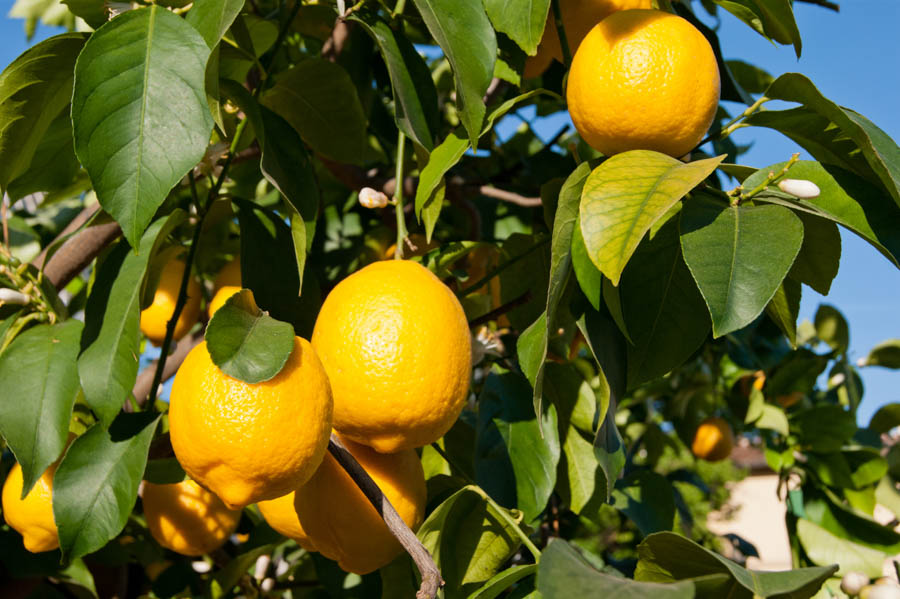Lemons and Companion Planting: What to Plant (or Not) Near Your Lemon Tree

Evergreen and elegant, lemon trees make beautiful landscape plants. But what should be planted in the large areas under and around your lemon trees? Choose plants that are good companions for lemon trees, that is, plants that have similar cultural requirements.
The GardenZeus recommendation: no plantings and no use of mulch, with bare soil only, for a distance from any citrus tree’s trunk of 2 to 4 times the diameter of the trunk, and at least several inches to a foot or more from major root buttresses and surface roots. Gardeners who follow this recommendation avoid trapping moisture and encouraging conditions that favor pathogens detrimental to citrus trees.
GardenZeus recommends against planting under the driplines of lemon trees for three reasons. First, healthy trees have a dense, evergreen canopy that blocks sunlight. Second, gardeners need access to the area under lemon trees to harvest lemons and prune the tree. Third, established citrus trees require dry conditions in the upper soil. Avoid planting thirsty or shallow-rooted plants within the driplines of citrus trees; the water needs of these plants may encourage disease and pest infestation in citrus. Under the deep shade of the dense, everygreen canopy, few plants can thrive, and those few who might thrive in the shade, will need more water than the citrus tree will like.
If maintained and pruned well, citrus trees make excellent companions with other citrus trees, regardless of variety, when planted 2 to 5 feet apart as evergreen espaliers, hedges, or living fences, or when planted intensively with up to four trees planted in a single hole and grown as a single tree.
What to Plant and What to Avoid. A wide range of plants are appropriate for planting near or under citrus beginning from slightly inside to slightly outside a tree’s dripline. Consider utilizing the space near and surrounding citrus with fragrant herbs and edible or ornamental plants that will support the living systems in your garden and landscape, such as those that feed insects, birds, or the soil, to the benefit of your plants. Many plants in the Apiaceae family have beautiful umbellate flowers that are especially attractive to beneficial insects, such as ladybugs and lacewings. Flowering plants with a high sugar content in their nectar often support adult beneficial insects and butterflies. Also, consider plants with abundant small flowers from the mint or aster families. Avoid root crops whose cultivation and harvest may disturb shallow citrus feeder roots.
GardenZeus has customized growing information by plant and zip code. To get started, enter your zip code.
Other articles of interest:
Lemon Trees: 7 Common Problems